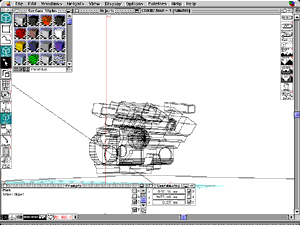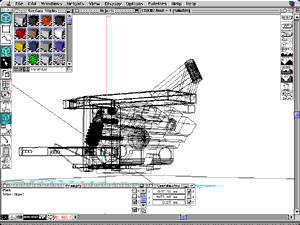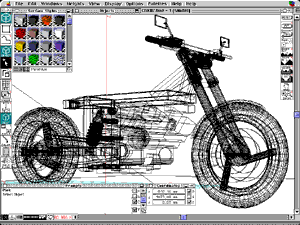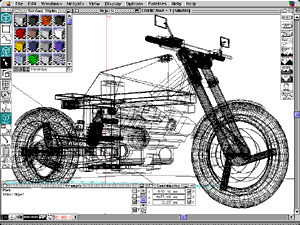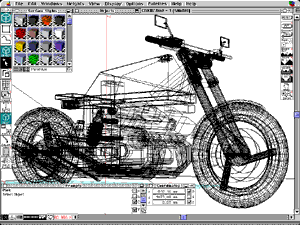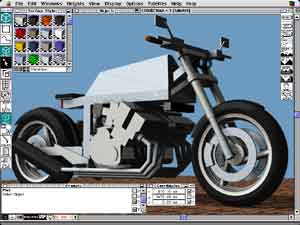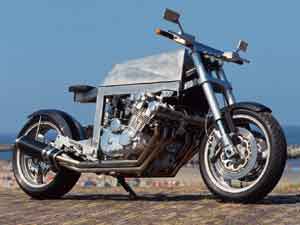
November 1993 I bought myself a fairly original Honda CBX1000, the first model. I restored this beautiful sixcylinder machine together with Jan van Atteveld and rode it for five years. A great bike, powerful engine and impressive looks. Although the frame is flexible like jelly, it was really possible to ride it like a sportsbike. Actually: it was thé sportsbike at the end of the seventies.
Click the picture to get an enlarged view of the picture.
Until 2001 I've taught the 3D-program Form*Z at the University of Professional Education. I measured my CBX's engine and worked it out in this program to use it for my students: how do you build something that looks very complex from geometrical shapes.
Click the picture to get an enlarged view of the screendump.
After that it was very tempting to design my own bike. Central element: the wide engine. The rest: leave out what may be left out. Just pure simplicity. I chose stainless steel because it is what it is: pure. I designed a narrow and angular frame to make the engine look wider.
Click the picture to get an enlarged view of the screendump.
Wheels and frontfork: GSX-R 1100. Handlebar: straight and angular, cables hidden from sight. Fenders: stainless steel processed in carbon fibre, angular too.
Click the picture to enlarge the screendump.
Gas tank: stainless steel and angular, no fuel cap, battery hidden from sight. Seat: Spartan small.
Click the picture to enlarge the screendump.
Click the picture to enlarge the screendump.
Click the picture to enlarge the screendump.
Click the picture to enlarge the screendump.
Click the picture to enlarge it.

This may all seem easy, but in reality of course it isn't. I showed the first design to my good friend Jan van Atteveld, who also happens to be a mechanical engineer and a technical expert. He was a great help from the beginning to the end.
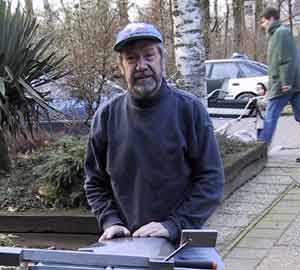
After this I contacted Willy Naves from Aalten, the Netherlands, who at that time teached metalworking in Doetinchem. He is a real no-nonsense craftsman and owned a self-built Martin-CBX, winner of several awards. Here he has his picture taken voluntarily, which is a rare occasion.

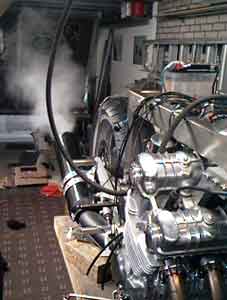
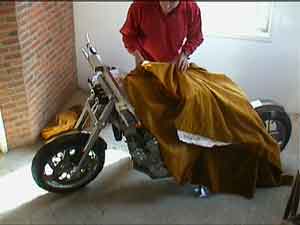
Until the presentation of the bike no one had ever seen a glimpse. Reason: I didn't want to be influenced by any well-meant advice; this might have disturbed the severity of my design.
On the sunny Sunday of March 19 2000, two and a half years after the first drawing, the bike was revealed to family and friends for the first time. No less than 41 people showed up. As a thank-you I left the lifting of the veil up to Jan.

August 19 2000, during the CBX Euromeeting in Almelo, someone asked me:
"And now?"
- "What do you mean, 'and now'?"
"What are yours future plans?"
That night new ideas flashed through my head.
The concept: changing it to an even more simple and basic bike. Inventing it took one sleepless night, realising it would take me more than one and a half year:
Six-into-six exhaust instead of a six-into-two exhaust.
Cameras instead of mirrors.
Magnet switches instead of visible switches.
Massive stainless steel seat instead of an upholstered seat.
